Making and canning tasty homemade tomato juice is one of the simplest and most efficient ways to preserve your tomato harvest!
It’s difficult to beat the flavor of fresh tomato juice. Especially if it’s cooked with tomatoes from your own garden or fresh tomatoes from a neighbor or local farmer’s market. It’s not only delicious, but it’s also one of the most helpful preserving goods to keep in your cupboard all year.
Tomato juice is both delightful and healthful on its own. But it’s also the ideal element for a variety of cuisines, soups, cocktails, and more!
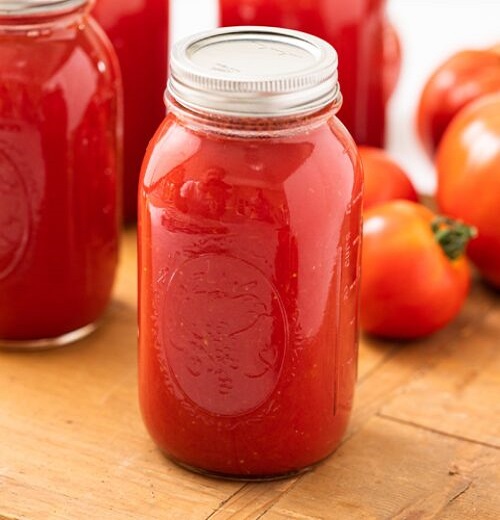
Tomato Juice: How to Prepare and Store
What Tomatoes Should You Use
To make juice, you can use any tomato, but some are better than others. The more juice a tomato has, the larger it tends to be.
To make your tomato juice, you can use a variety of tomatoes. Brandywine and Purple Cherokee heirloom tomatoes, for example, aren’t always the prettiest, but their flavor and juice are out of this world.
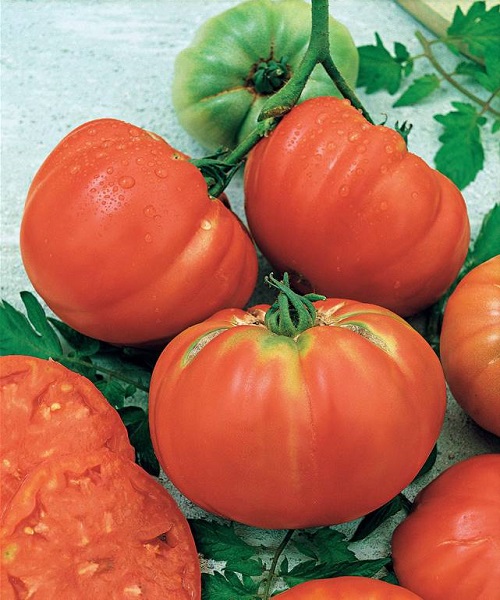
And if you can’t think of anything better to do with your buckets of cherry tomatoes, toss those in the pot as well!
Avoid using paste tomatoes like Roma, San Marzano, and Amish Paste in your juicing because thy have thick, meaty walls. However, in your salsa, spaghetti sauce, and chopped tomato recipes, they are the greatest.
Tomato juice may be made and canned with just about any variety of tomato, but there is one thing to keep in mind. Make sure you don’t use mostly low-acid tomato varieties.
Tomatoes’ natural acidity makes them safe to preserve without the use of additional preservatives. For those who want to use low-acid juices, freezing the juice instead of canning is a good option.
Here’s how it’s done:
In general, an 8-quart pot of small, chunked tomatoes yields about 6-7 quarts of tomato juice.
1. Rinse the tomatoes.
2. Remove the core and any damaged areas.
Remove the core and any damaged areas §§§§§§§
3. Chop the tomatoes into small pieces. The faster the process, the smaller the chunks.
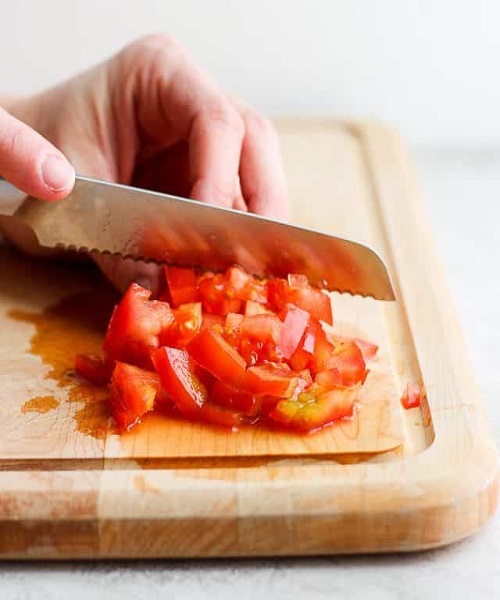
4. Place enough tomato pieces to fill a large non-reactive stockpot 1/6th full over medium heat. Mash the tomatoes with a potato masher as they begin to heat up to release the juices. Stir often to avoid burning the bottom of the saucepan. Bring the tomatoes, broken down, to a light boil.
5. As soon as the pot starts to boil, add the remaining tomatoes. To avoid scorching, stir often. If you want to add more tomatoes, you will have more room in your pot as the tomatoes cook up.
6. Return the pot to a boil and continue to cook for 5-10 minutes, or until the tomatoes can be easily smashed.
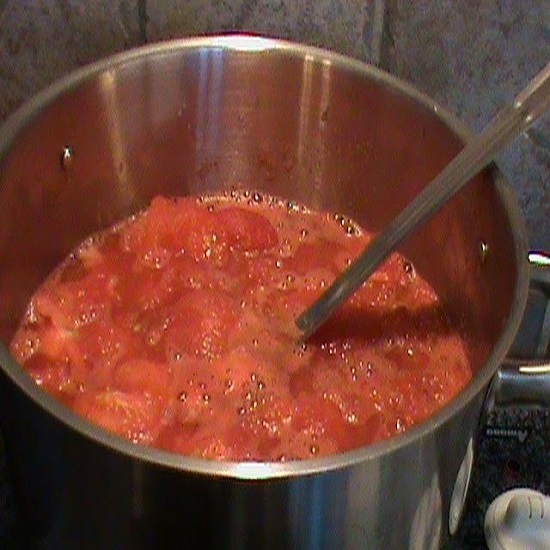
7. After they have boiled down, remove the skins and seeds. A tomato press, strainer, or mill works amazingly well for quickly removing and separating the seeds and skins.
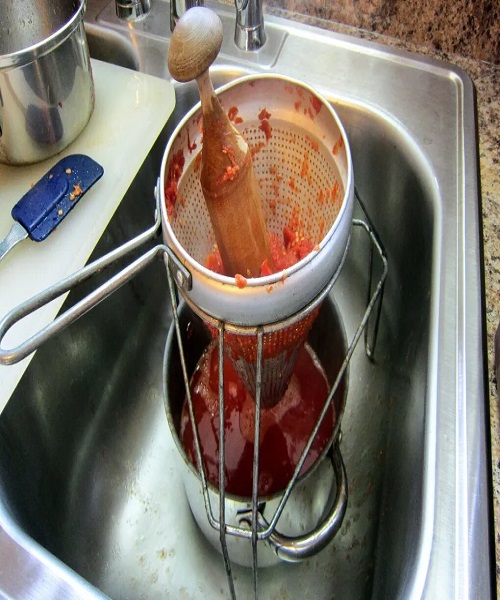
8. Return the strained juice to the stockpot and cook over medium-high heat. Then, after 10 minutes, bring it back to a boil.
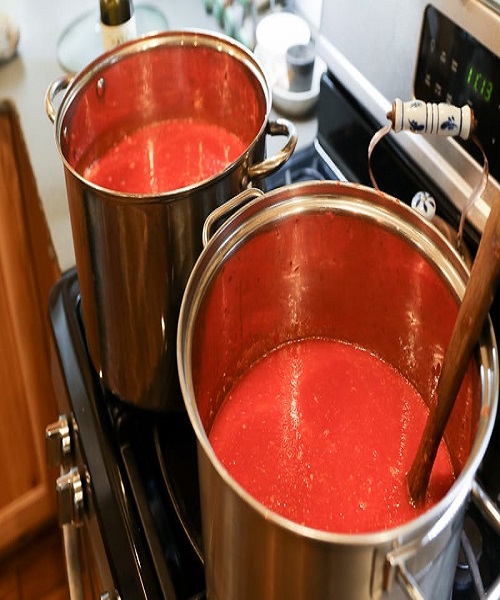
9. To each pint of sterilized canning jar, add 1 tablespoon of bottled lemon juice, or 2 tablespoons in quart jars. Fill heated tomato juice into jars, leaving 1/2 inch headspace.
Then wipe the rim clean with a clean cloth. Then place the lid on top and tighten the band just until it is finger-tight.
Most lids now include Sure-Tight technology, which inhibits heating the lid before putting it on top of the mason jar. Check to see what variety you have purchased.
Process Time:
Canning processing times are all based on altitudes of 1,000 feet or less. You must change the processing time based on your altitude.
Hot Water Bath – 35 minutes for pint jars and 40 minutes for quart jars.
Pressure canner – 10 lbs of pressure for 15 minutes for both pint and quart jars
To avoid water spots on pressure canned jars, add 2 tablespoons of distilled white vinegar immediately to the pressure canner’s water.
Please keep in mind: that canning tomato juice in an open kettle is neither safe nor advised. This is the stage at which you bring the tomato juice to a boil, pour it into sterilized jars, and secure the lid and ring. The lid will seal shut due to the heat of the food.
Although your grandmother, mother, or even you may have ‘canned’ this way in the past, it is not an accepted method of canning. It is preferable to use the water bath or pressure canning process instead.
How to Store:
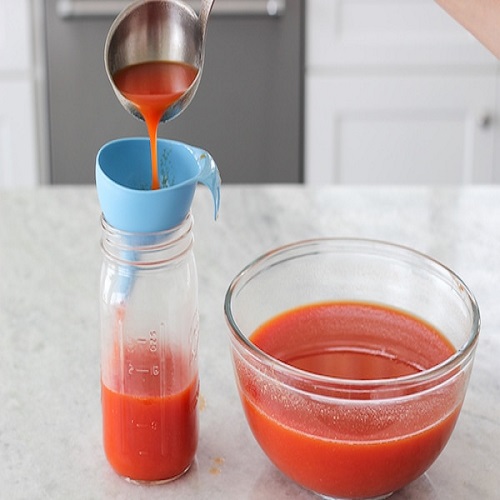
When the processing time is up. Allow the jars to rest in the hot water for 5 minutes with the burner turned off. The jars should then be carefully removed from the canner, placed on a large cloth, and allowed to cool for 24 hours.
At that point, check each individual lid to determine if it has properly sealed. This is simple to perform by pressing on the center of the lid.
If there is any movement, the jar has not been properly sealed. Simply place any jars that did not seal in the refrigerator. As long as it’s kept cold, it’s fine to eat.
Keep the correctly sealed jars in a cold, dark location. Label each jar with the date it was processed.
You might see that the liquid in the jar has separated. This is normal for homemade tomato juice that has been canned. The separation happens during the lengthy process of bringing the tomatoes to a boil.
Adding a small amount of tomatoes and bringing them to a boil before filling the pot can help reduce separation.
No matter how it looks, a jar of tomato juice and lemon juice that has been properly sealed is safe to drink.
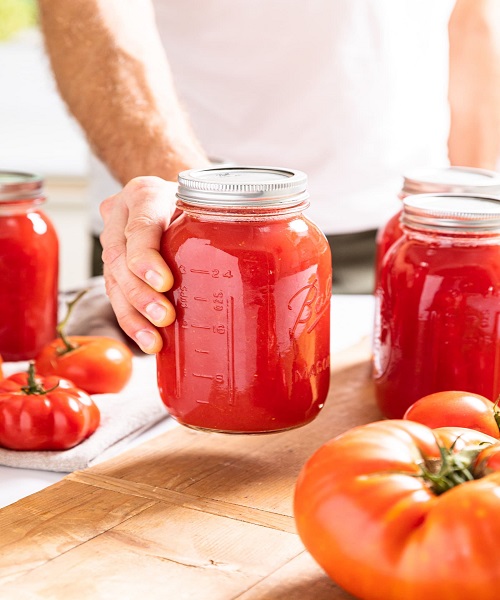
How to Use Tomato juice:
You can use tomato juice you made at home in any recipe. It’s a great base for Homemade Vegetable Soup, meats, stews, and, of course, tomato soup.

You can also make spaghetti sauce with it. Just add some tomato sauce, tomato puree, and Italian spices.
And don’t forget that you can just drink it as a healthy alternative to juices from the store.
Enjoy!

